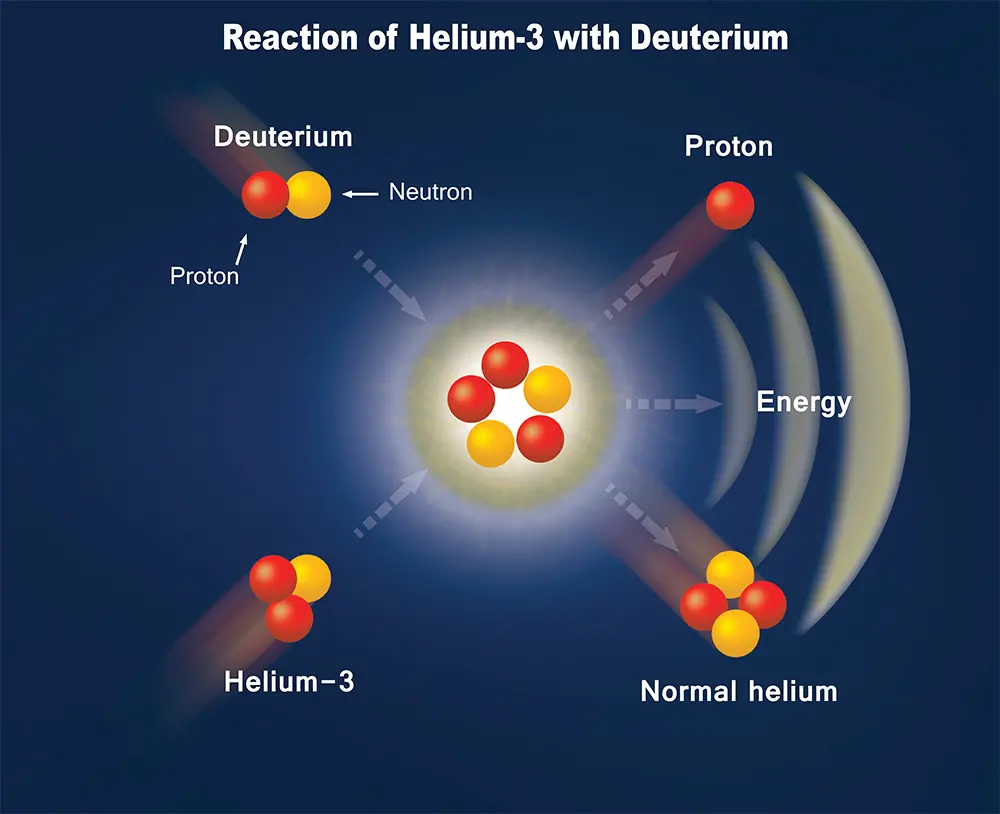A new research report shows that the reserves of helium-3 (helium-3,3he), a key scarce resource on earth, may be 10 times higher than previously estimated Although the source of all these additional supplies remains mysterious. This discovery is important because helium-3 can be used as the basis of unlimited clean energy for our civilization, but it has always been considered inaccessible because it mainly exists in outer space, especially on the moon.

Helium-3 is an isotope of helium, which means it contains the same number of protons as this common element, but different numbers of neutrons. This isotope is considered to be a potentially powerful energy source for future nuclear fusion reactors, so it can often be seen in science fiction and is also a sought after resource in the real world. However, although a small amount of this material is produced by geological processes and dust from nuclear weapon tests, it is believed that there is very little helium-3 available on earth.
Now, scientists led by Benjamin Birner, a postdoctoral scholar in Geosciences at the University of California, San Diego, have captured previously unknown evidence of helium-3 abundance in the atmosphere. According to a study published in Nature Geoscience on Monday, this poses a major problem for the budget of helium-3 and urges people to find the source of missing helium-3 on earth, especially because helium-3 is considered an important but scarce resource. The researchers said that only 10% of the remaining helium-3 sources are known on earth.
In solving another challenging problem, Birner and his colleagues stumbled upon an inference about the surplus of helium-3 (3He): measuring the overall rise in atmospheric helium caused by human consumption of fossil fuels. The team pioneered a technique to estimate these anthropogenic helium emissions by examining another isotope, helium-4 (4He), which in turn led to the confusing conclusion that there are some unknown sources of helium-3 on our planet.
"We only measured changes in helium-4 in the atmosphere," Birner said in an email. "However, previous work by other researchers has shown that the helium isotope ratio (3He / 4He) in the atmosphere is roughly stable. Together, these observations mean that the increase in 3He in the atmosphere matches the rise in 4He, otherwise we will see changes in the isotope ratio in the atmosphere.".
Helium-3 may be an ideal fuel for nuclear fusion, a potential energy source that simulates the same process that powers stars. Although it will not become an attractive and practical field of nuclear energy for mankind in decades, it will not provide an unlimited potential for nuclear research. For this reason, scientists in various fields may be interested in finding this unexplained excess helium-3 on earth implied by the new research.
Birner pointed out: "The increase of 3He is quite puzzling, because so far, we have no good explanation for the source of these 3He. This is a very important puzzle, because 3He is an important and scarce resource of nuclear fusion reactor. According to the uncertainty of previous research reports on the trend of atmospheric 3He / 4He, 3He accumulation seems to be important, but our research clearly urges us to observe atmospheric 3He / 4 more carefully He trend ".